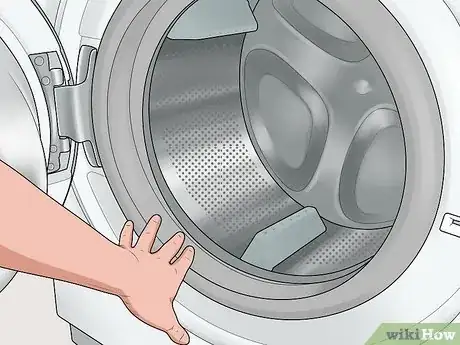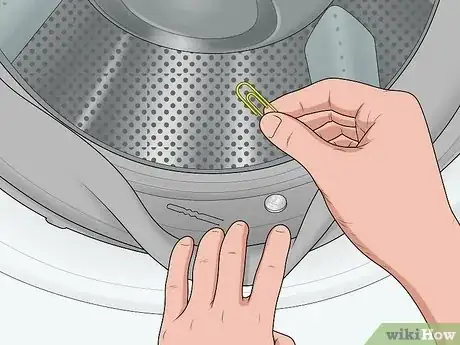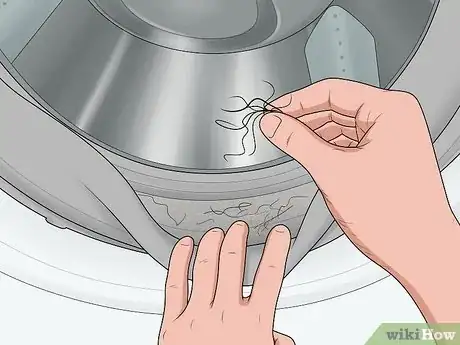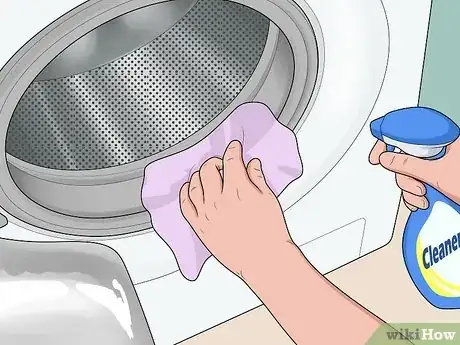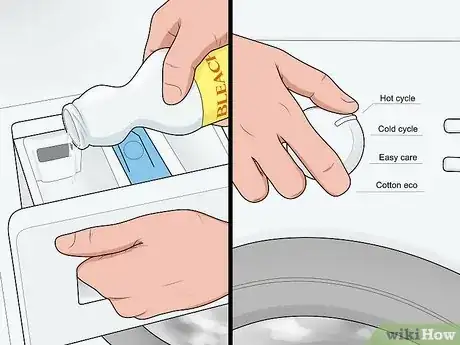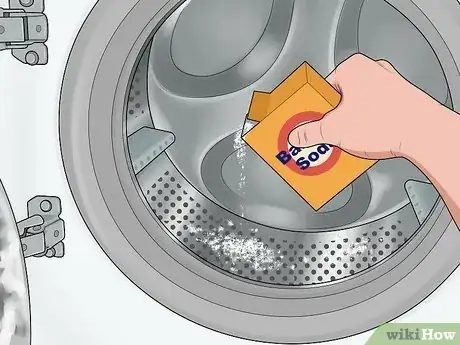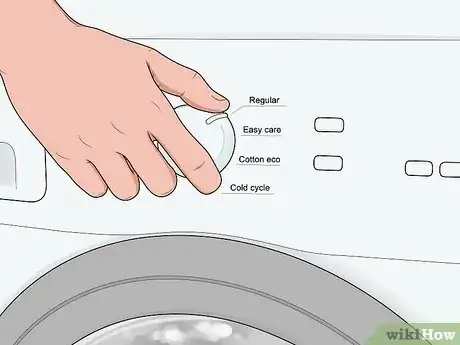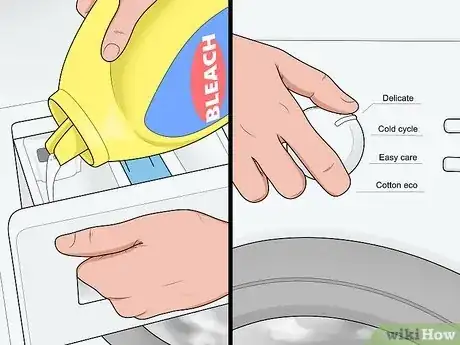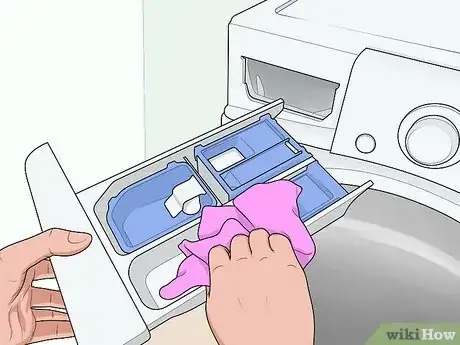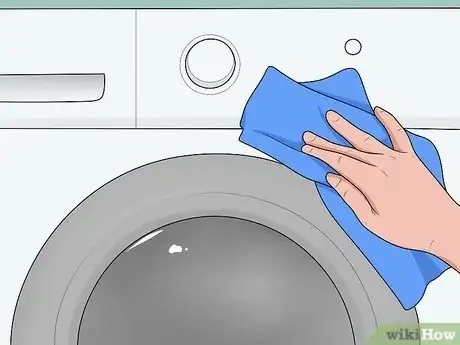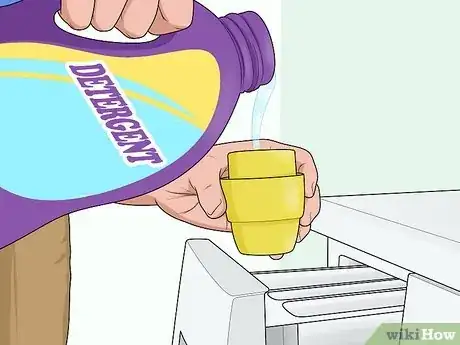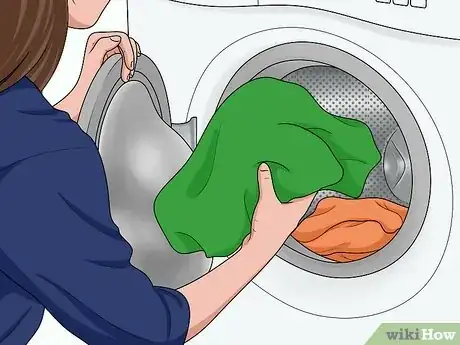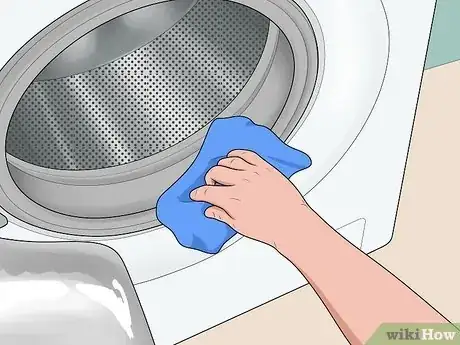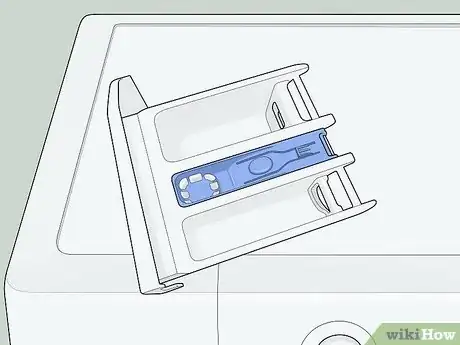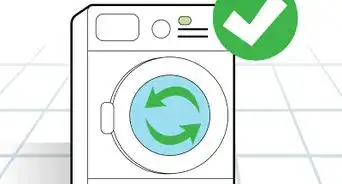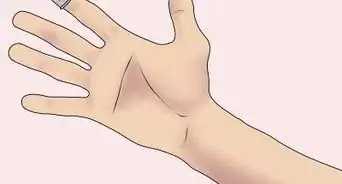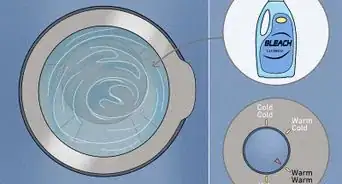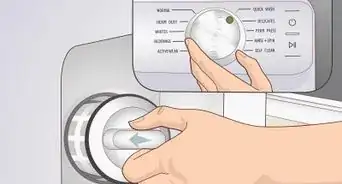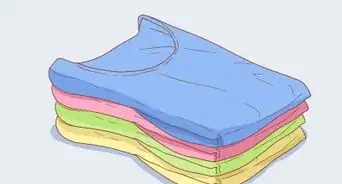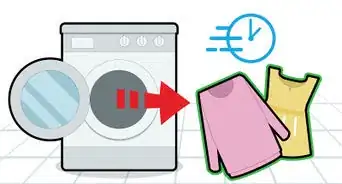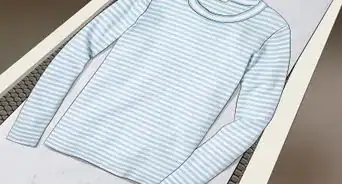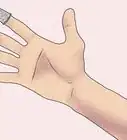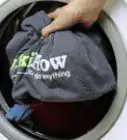This article was co-authored by Chris Willatt and by wikiHow staff writer, Jessica Gibson. Chris Willatt is the owner and founder of Alpine Maids, a cleaning agency in Denver, Colorado started in 2015. Alpine Maids has received Angie's List Super Service Award for three years in a row since 2016 and has been awarded Colorado's "Top Rated Local House Cleaning" Award in 2018.
There are 7 references cited in this article, which can be found at the bottom of the page.
wikiHow marks an article as reader-approved once it receives enough positive feedback. In this case, 98% of readers who voted found the article helpful, earning it our reader-approved status.
This article has been viewed 565,535 times.
High-efficiency (HE), front load washing machines are easy to love because they require less water and detergent, thus saving money. However, these models require special procedures to clean and to air out the (interior) components. If you find your front load washer smelling like a locker room, it’s time to clean it thoroughly and start using special maintenance procedures. Regularly clean the gasket and drum of the washer so that mildew doesn't grow. You should also learn how to keep your washing machine dry and clean between loads.
Steps
Cleaning the Gasket
-
1Locate the gasket. The gasket is the rubber ring that runs along the opening of your washer's drum. This is what creates a seal to prevent water from leaking out of your washing machine. Open the washing machine door as wide as you can and peel back the rubber that runs around the opening.
- The gasket will remain fixed to the washing machine, but you can pull it open to clean it and make sure nothing is stuck.
EXPERT TIPChris Willatt is the owner and founder of Alpine Maids, a cleaning agency in Denver, Colorado started in 2015. Alpine Maids has received Angie's List Super Service Award for three years in a row since 2016 and has been awarded Colorado's "Top Rated Local House Cleaning" Award in 2018.House Cleaning Professional
 Chris Willatt
Chris Willatt
House Cleaning ProfessionalClean the filter when you clean the gasket. Chris Willatt, the owner of Alpine Maids, says: "In a front loader, the filter is usually in the bottom left corner of the machine. Once a month, clean out that filter to remove lint and old laundry detergent."
-
2Remove any foreign objects. Once you've pulled back the gasket, check for any objects between the rubber. Sharp items can damage the gasket and the washing machine if you run the machine. Always check the pockets of you clothes and remove items before washing them.Common foreign objects include:[1]
- Hair pins
- Nails
- Coins
- Paper clips
Advertisement -
3Check for dust or hair. If you notice hair in the gasket, this means that particles from your clothes are building up on the clothes. If you have pets or people with long hair in your household, you should check the gasket for hair at least once or twice a week. If the gasket looks dusty, you may need to occasionally keep the door on your washer closed. For example, if your dog will be crated in the laundry room overnight, keep the door closed.
- Dust builds up on the gasket when dust or lint from your dryer or laundry room floats around and lands on the gasket. Cut back on dust particles in the air by regularly changing your lint trap.
-
4Clean any mildew. If you see black spots, your washing machine is growing mildew. This means that the gasket isn't getting dry enough between uses or your soap is leaving behind too much residue. This moisture causes the mold to grow. To remove mildew, spray down the gasket with hot soapy water or a mildew cleaner. Wipe the cleaner away using a clean cloth or rag.[2]
- You may need several cloths if the gasket is slimy with mildew. Keep spraying and wiping until your cloth comes away clean.
-
5Deep clean the gasket once a month. To kill the mildew, add 1 cup of bleach into your empty machine’s tub and run a hot cycle. You should also pour 1/2 cup of bleach into the detergent or fabric softener compartment to ensure that your entire machine gets clean. After the cycle is done, run 1 or 2 rinse-only cycles (hot) to both clean and to remove the bleach scent from the machine[3]
- If you notice black mold on mildew spots after running your machine, you may need to put on gloves and a mask to scrub the spots using a bleach solution. Dip a toothbrush in a solution of no more than 10% bleach and scrub the mildew.
Cleaning the Drum
-
1Sprinkle 1/3 cup (74g) of baking soda into the inside of the drum. Baking soda will help to remove any odors from mildew or dirty cloths. Close the door. Load two cups (473ml) of white vinegar into the detergent tray. If the full 2 cups do not fit in the detergent tray, add the small excess to the fabric softener tray. The vinegar and baking soda will create a reaction that cleans the drum of your washing machine.[4]
- Always check the instruction manual that came with your machine for specific cleaning recommendations.
-
2Turn your washer on. Set your washing machine to do a cleaning cycle (if you have that option). If not, set it to do a regular wash. Choose a high-temperature wash so that the baking soda and vinegar will have a chance to react. Let the machine run through a full wash and rinse cycle.[5]
- If your HE washer has a cleaning cycle, the owner's manual will have specific instructions about when to add the vinegar and baking soda.
-
3Clean stains in a very dirty HE washer. If your machine is very smelly, and you suspect mildew is growing inside the drum, run a cycle with bleach. Load two cups (473ml) of bleach into the bleach dispenser. Add any excess bleach to the fabric softener tray. Run a wash and rinse cycle. To completely rinse out your machine, follow by running a hot rinse cycle (without anything in the drum and without bleach).
- Never run a cycle with baking soda, vinegar, and bleach. Toxic chlorine gas is created, which could damage your machine and even kill a bystander.
-
4Remove and clean the detergent dispenser panel. Pop off the detergent dispenser panel and soak it in warm water. Remove the panel and spray it with all-purpose cleaner. Wipe it clean and pop it back into place.
- If your machine has a fabric softener dispenser, you should clean and wipe its panel as well.
-
5Clean the outside of the washer. Spray a clean cloth or rag with multi-purpose cleaner. Wipe along all exterior surfaces of your washing machine. You'll wipe up any lint, dust and hair that can build up on the outside.
- Keeping the outside of your machine can prevent dust and dirt from getting into your machine.
Maintaining a Front Load Washer
-
1Use the right detergent. Purchase a detergent that's specifically designed for use in an HE machine. You should also use only the recommended amount of HE detergent (and fabric softener). If you use more detergent than is necessary, the detergent will build up on your clothes and on your machine.[6]
- Detergent buildup can create odor and cause mildew to grow.
- Nearly all pod/pac-style detergents are HE-friendly. For heavy loads, manufacturers even recommend 2 to 3 pacs, even in an HE machine.
-
2Remove your laundry right after it is done. Don't let your clean wet clothes stay in the washing machine for hours before switching them to the dryer. Mildew and odors develop more quickly in HE washers than top load models.[7]
- If you can't switch the load of wet laundry, at least try to crack the door open so that the moisture isn't completely trapped in the washing machine.
-
3Dry the gasket in between loads. Ideally, you should take an old towel and completely wipe around the gasket after every load of laundry you wash. The goal is to remove all moisture from the gasket so mildew can't grow. Keep the door slightly open when you're done washing a load so that moisture evaporates from the machine.[8]
- You should also dry the inside of the door, especially if you tend to keep the door closed.
-
4Remove and air dry the dispenser tray. While you should be in the habit of regularly cleaning the detergent dispenser panel or tray, get in the habit of at least removing it after each wash cycle. Take the dispenser tray out and let it air dry. This will also get air moving into the machine itself which can prevent mold growth.
- If you're in the habit of removing the dispenser tray after each wash, you can quickly check it over for black mildew or stains that need to be cleaned.
Expert Q&A
-
QuestionHow do I get my front load washer to stop smelling?
 Chris WillattChris Willatt is the owner and founder of Alpine Maids, a cleaning agency in Denver, Colorado started in 2015. Alpine Maids has received Angie's List Super Service Award for three years in a row since 2016 and has been awarded Colorado's "Top Rated Local House Cleaning" Award in 2018.
Chris WillattChris Willatt is the owner and founder of Alpine Maids, a cleaning agency in Denver, Colorado started in 2015. Alpine Maids has received Angie's List Super Service Award for three years in a row since 2016 and has been awarded Colorado's "Top Rated Local House Cleaning" Award in 2018.
House Cleaning Professional The best thing you can do is preventative maintenance. Clean the filter monthly. After you use the washing machine, always leave its door a little bit open, so that you don't give the water time to sit in there, build up, and create that mildew. If it's too late for that, you can use vinegar: pour a good amount of vinegar down in there and run a cycle to hit the mildew. Then open it up, wipe out the lid area that you can access with a microfiber or rag, and then leave the door open to let it air out.
The best thing you can do is preventative maintenance. Clean the filter monthly. After you use the washing machine, always leave its door a little bit open, so that you don't give the water time to sit in there, build up, and create that mildew. If it's too late for that, you can use vinegar: pour a good amount of vinegar down in there and run a cycle to hit the mildew. Then open it up, wipe out the lid area that you can access with a microfiber or rag, and then leave the door open to let it air out. -
QuestionFabric softener will not dispense into washer, what do I do?
 shikhar goliyaCommunity AnswerIt could be that the washer is not leveled, dispenser is clogged, or the washer is getting low water pressure. If your washer is getting low water pressure, check the inlet hose screens for a blockage. To check the screens, turn the water off at the water valves. Remove the hot and cold water hoses from the back of the washing machine. Use a pair of needle-nose pliers or a suitable tool to remove the filters. Clean the filters and reinstall them, and then reattach the hoses.
shikhar goliyaCommunity AnswerIt could be that the washer is not leveled, dispenser is clogged, or the washer is getting low water pressure. If your washer is getting low water pressure, check the inlet hose screens for a blockage. To check the screens, turn the water off at the water valves. Remove the hot and cold water hoses from the back of the washing machine. Use a pair of needle-nose pliers or a suitable tool to remove the filters. Clean the filters and reinstall them, and then reattach the hoses. -
QuestionShould I use vinegar and water together?
 Community AnswerYes. Use 1/3 cup baking soda and 2 cups vinegar. Then run the clean cycle. If your washer does not have the clean cycle, run the hottest and longest load.
Community AnswerYes. Use 1/3 cup baking soda and 2 cups vinegar. Then run the clean cycle. If your washer does not have the clean cycle, run the hottest and longest load.
Things You'll Need
- Clean rags
- Toothbrush
- Bleach
- Towel
- Rubber gloves
References
- ↑ http://www.daewooelectronics.co.uk/media/manual/Manual_DWDMIFI.pdf
- ↑ http://www.todayshomeowner.com/how-to-remove-mold-and-mildew-from-front-load-washing-machines/
- ↑ http://www.drkarenslee.com/front-loading-washer-maintenance/
- ↑ http://www.diynatural.com/how-to-clean-front-load-washer/
- ↑ http://www.onegoodthingbyjillee.com/2012/02/how-to-fix-smelly-washing-machine.html
- ↑ http://www.prettyhandygirl.com/how-to-keep-your-he-front-load-washer-clean-and-smelling-fresh/
- ↑ http://www.cleanandscentsible.com/2013/09/how-to-clean-your-washing-machine.html
- ↑ http://www.todayshomeowner.com/how-to-remove-mold-and-mildew-from-front-load-washing-machines/
About This Article
If you need to clean your front load washer, start by grabbing the door’s gasket, which is the ring of rubber that goes between the door and washer. Pull the gasket open a little and remove any foreign objects like coins or nails. Then, use a rag to clean the dust and hair out of the gasket. To clean the drum, pour 1/3 cup of baking soda into the machine, and put 2 cups of white vinegar in the detergent tray. Run the machine on a cleaning cycle and the two agents will react and clean your machine. Read more to learn how to use bleach to clean the machine.
